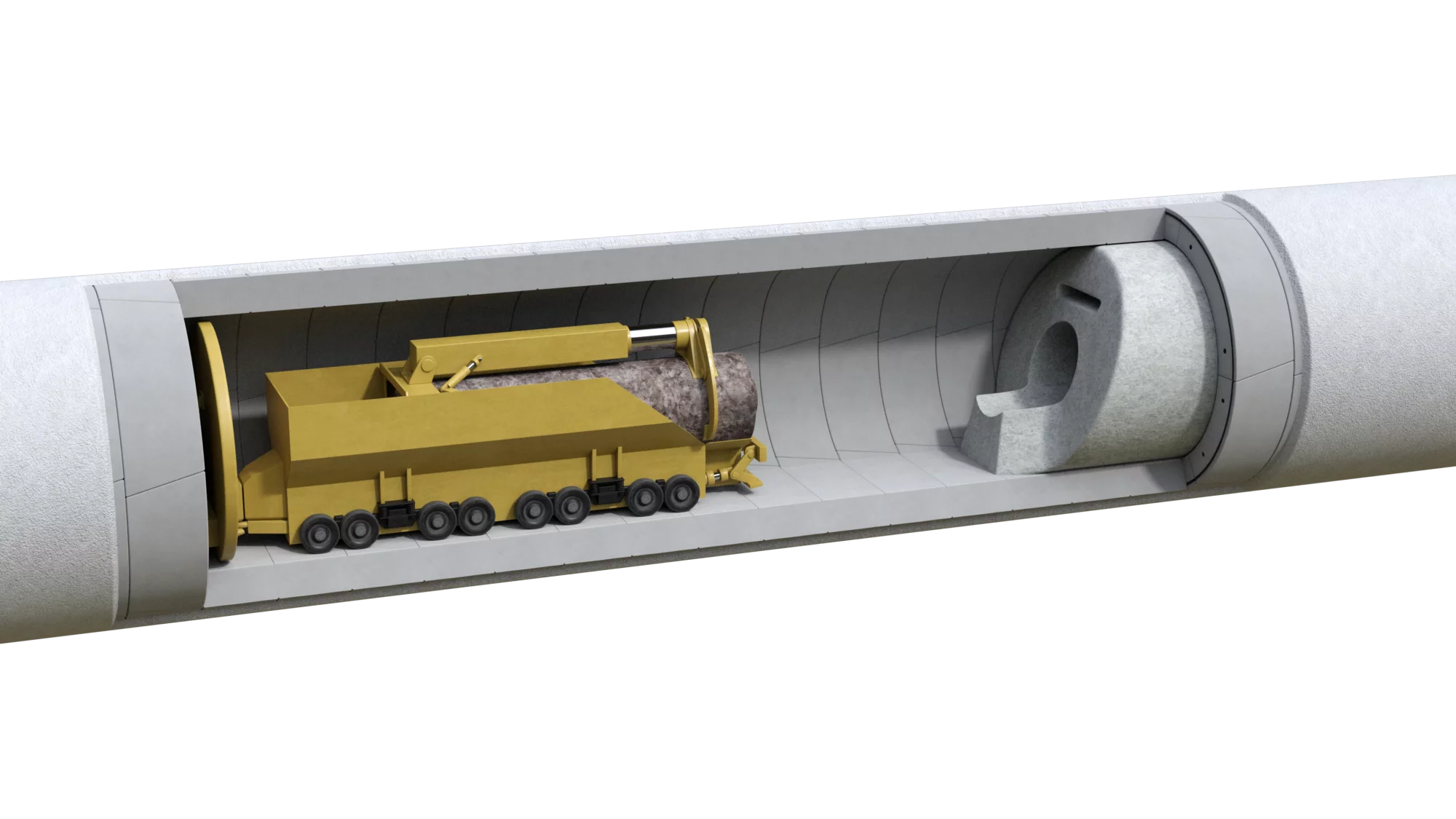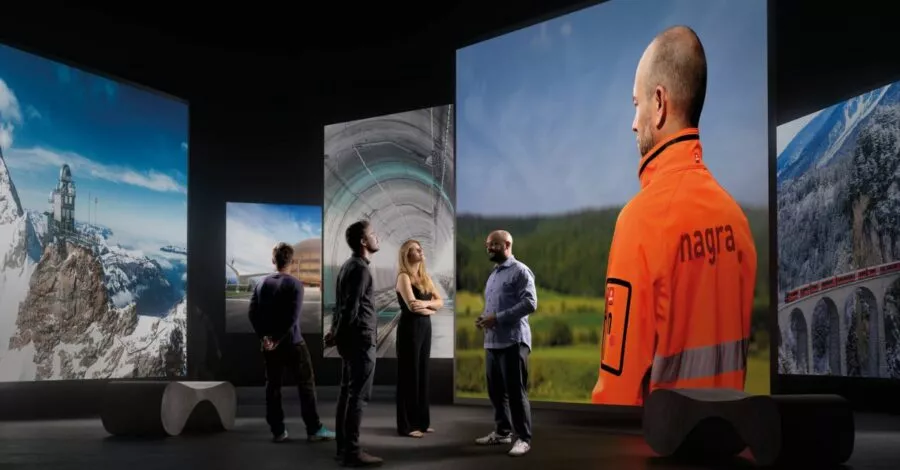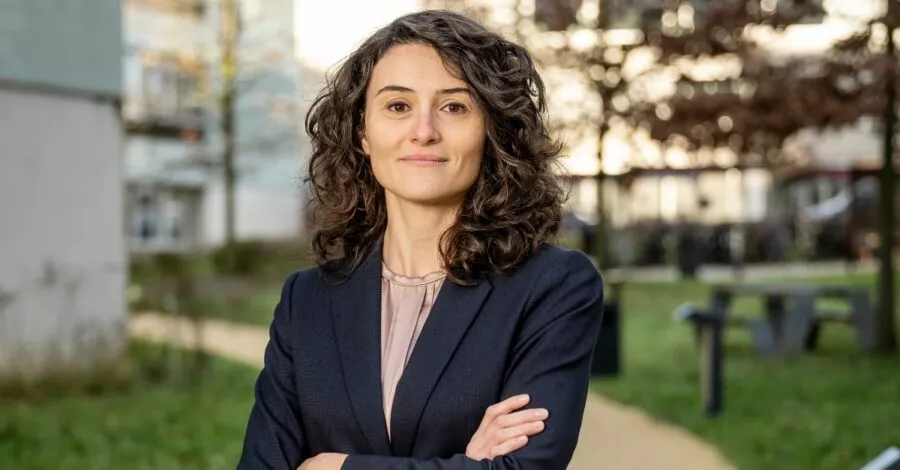
Thorsten Steils, the radioactive waste will be disposed of in a deep geological repository. Nagra likes to emphasise, and does so often, that this solution is safe. Why are you then still working on solutions to retrieve the waste?
Let me begin by stressing that we do not expect the need to retrieve the waste. However, the law requires that the waste can be retrieved without undue effort until the final closure of the repository. Should the repository evolve differently than expected and we could no longer demonstrate that the repository would remain safe in the long run, we would have to retrieve the waste. However, we estimate the likelihood of such a scenario to be very small. First of all, we will only be allowed to emplace the waste if the authorities confirm that this is very safe. Should there be any safety-related doubts making retrieval a likely scenario, we would not be granted the licence to emplace the waste to begin with. We cannot rule out such a scenario with absolute certainty; that would be unscientific. But we can rule it out with almost 100 per cent certainty.
Future generations might also want to retrieve the waste for other reasons. For example, they might prefer other disposal methods or want to reuse the waste as a resource. But that is for future generations to decide.
So even if you do not anticipate the need for retrieval, you are obliged to provide the option. What exactly does this mean?
It is crucial to consider the retrieval option during the emplacement process. Carefully documented emplacement is key. We will use a structured approach and document the exact location and content of each disposal canister.
The canisters will be emplaced in such a way that they can be accessed again and brought to the surface if necessary. The voids in the emplacement drifts housing the containers will be backfilled. The canisters will be protected by this backfill material and remain intact for a very long time.
We already possess the technology required to retrieve the waste. To put it simply, the retrieval process is just like the emplacement process – but the other way around. The key difference is that, during retrieval, we have to remove the backfill material for the voids between the disposal canister and the drift, instead of emplacing it. For the most part, we can work with the same machines and processes as we do for emplacement.
About Thorsten Steils:
Thorsten Steils has been working as a mining engineer for Nagra since 2020. After studying raw materials engineering at the RWTH Aachen University, he initially worked as a site manager in underground mining, where he was mainly responsible for restoration projects in abandoned mines. He then worked as a project engineer in an engineering firm and specialised in planning and construction supervision in restoration mining. At Nagra, he works not only on waste retrieval but also on the final closure of the repository.

Key points at a glance:
The law requires that radioactive waste be disposed of in a deep geological repository in such a way that retrieval remains possible. In a new report, Nagra demonstrates how the waste can be retrieved, but assumes that retrieval will not be necessary. The required technology is already available today. To put it simply, the retrieval process is just like the emplacement process – but the other way round. Crucial to successful retrieval is taking this option into account during emplacement and carefully documenting the emplaced waste.
Until when will waste retrieval remain possible?
Retrieval will remain possible without undue effort until the final closure of the repository. At the moment, we expect the monitoring phase to last 50 years. After this, the shafts will be backfilled and the repository sealed. Even then, retrieval will remain possible, but the process will be more complicated. However, in return, our repository will be passively safe after closure, meaning that it will remain safe without the need for human intervention. The disposal containers – especially the canisters for high-level waste – are very robust and will contain the waste for thousands of years. As long as these canisters remain intact, waste retrieval will be relatively easy from a technical point of view. As time goes on, however, retrieval will become more complex.
You said that the waste will have to be retrieved if the repository evolves differently than expected. What might such an unexpected scenario look like?
We consider all conceivable scenarios and develop suitable measures to prevent or control these. We can also rely on a redundant multi-barrier system. Should one barrier fail, the next one will take over its safety function. If we already knew today what unexpected scenario to anticipate, it would obviously not classify as unexpected. If that were the case, we would already take measures today to ensure that it cannot occur in the future.
Should an unexpected scenario occur, we will have to react to it. The Swiss Federal Nuclear Safety Inspectorate will only order the retrieval of the waste when the overall system no longer functions and we can no longer demonstrate that the waste will remain contained until it is no longer hazardous. But as I said: we do not expect this scenario to occur. Ultimately, retrieval is a final safeguard in case all of us – the experts, the supervisory authority and we here at Nagra – are wrong.
Video animation of the retrieval process
In your report, which has now been published, you demonstrate how retrieval would work. What are the next steps with regard to this topic?
We will continue to optimise the processes, work on the details, develop other options and select the best one. Technology is constantly evolving, and we want to and must take advantage of this progress and incorporate it into the retrieval concept. In the end, we will have to demonstrate in an experiment conducted in the repository that we have mastered retrieval and that our retrieval concept works. This is one of the many conditions that we have to meet in order to be allowed to start the emplacement procedure in the first place.
Similar articles
What does Switzerland think about the deep geological repository?
Switzerland is confident that it can realise the project of the century of deep geological disposal. A recent, representative survey shows that acceptance is high across the whole of Switzerland and in the affected region.



